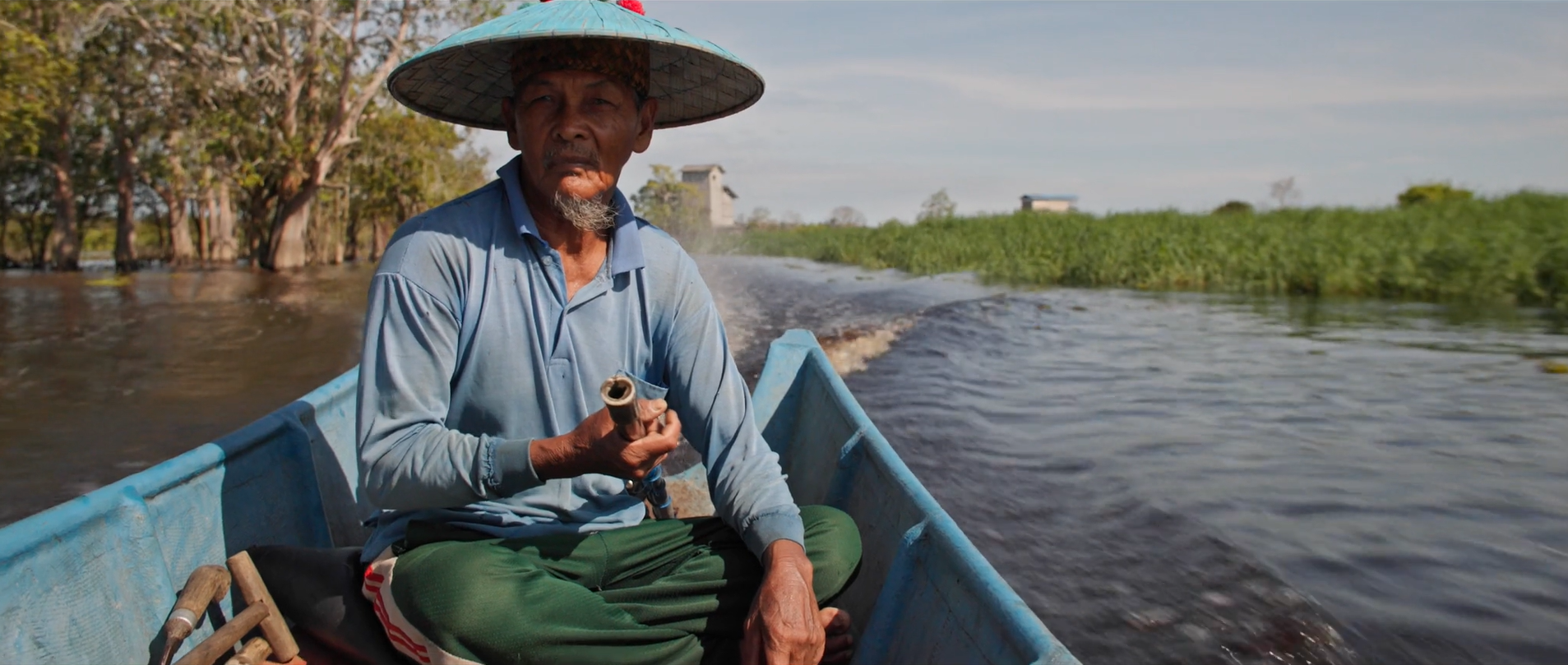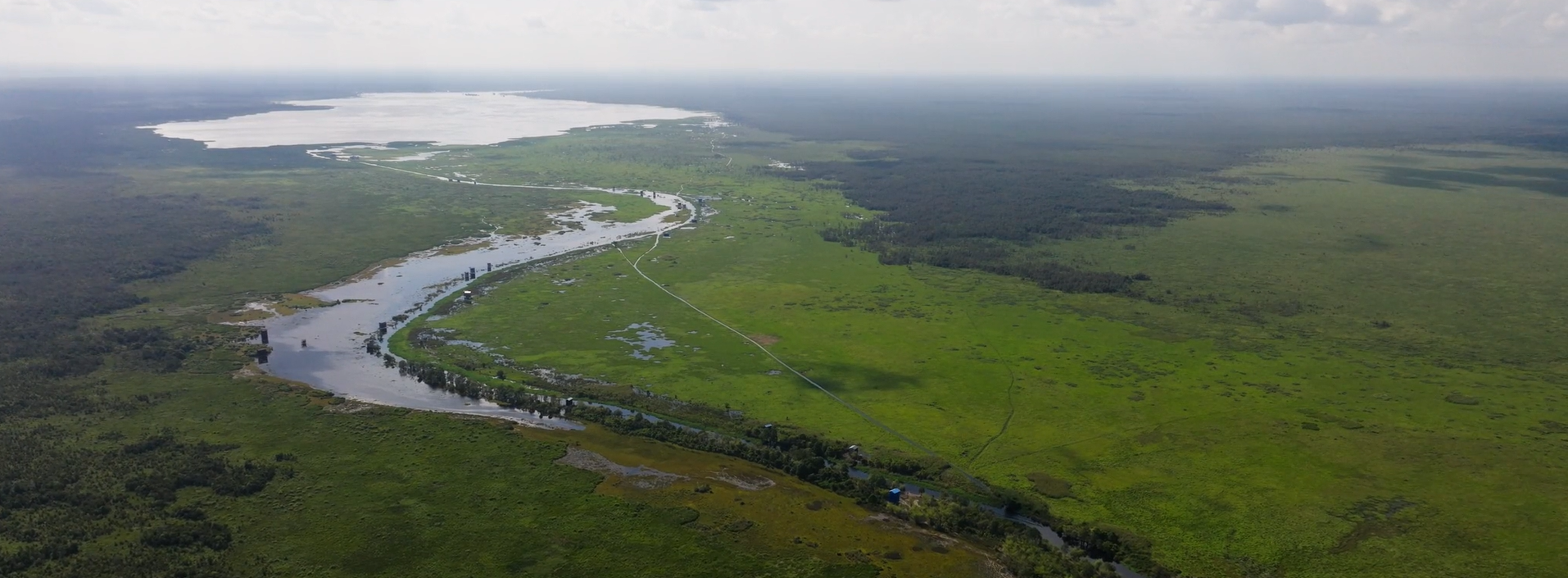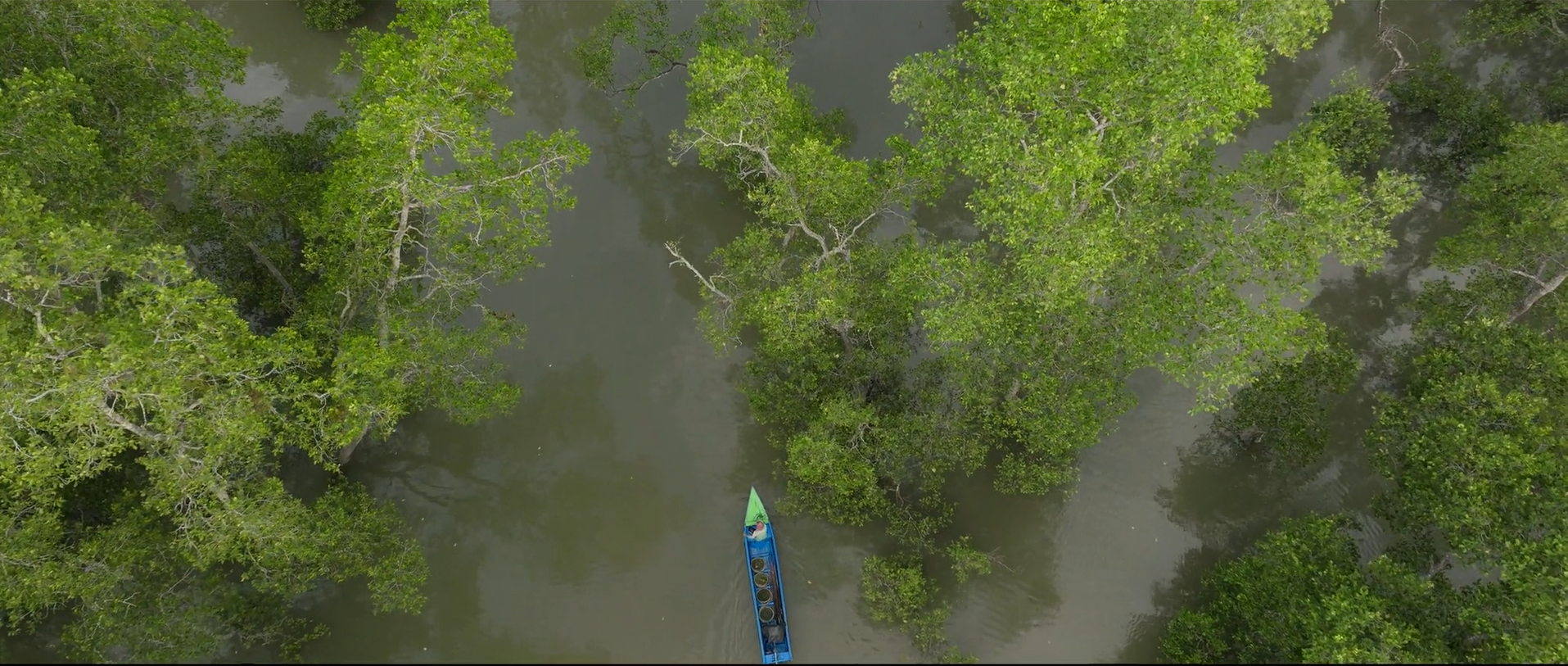Wetlands for livelihoods: local communities thrive by protecting mangroves and peatlands in Borneo

With temperatures rising at increasingly rapid rates, the need for solutions that not only sequester carbon from the atmosphere, helping mitigate global warming, but also provide shelter and help communities adapt to extreme events, is more pressing than ever. At the same time, these solutions must safeguard ecosystem balance and livelihoods. What if we told you that one single ecosystem does exactly that? Wetlands. Protecting and restoring mangroves, peatlands, and marshes has the ability to store more carbon than any other ecosystem on Earth, while also providing coastal resilience and preserving fish populations – on which many lives depend. This World Wetlands Day (2), we bring you the stories of how communities in Indonesia are doing just that.
Dedicated to the restoration of the Indonesian mangrove forests, the Teluk Semanting village members in East Kalimantan are embracing the mantra “more mangroves, more blessings” as they plant Rhizophora seedlings and preserve their traditional ways of living.
In 2007, they made the bold decision to transition the area from unproductive shrimp ponds into a protection site turned ecotourism destination. This decision was not made lightly. Faced with the disappearance of animals, the fishing village was losing its primary economic source and, consequently, livelihoods. They began by constructing a 40-meter bridge to literally reconnect the community with the mangroves and planting 2000 Rhizophora seeds, a collaborative effort with nature.

Now, they are reaping the rewards. Life has returned to the village, with various species such as crabs, small fishes, and shellfish of better quality appearing regularly thanks to the protected area. Juhainah, a member of a women’s group dedicated to producing amplang, an Indonesian traditional savory fish cracker snack, also witnessed an increase in her product’s quality and value. She attributes this improvement to the community’s efforts to protect the mangroves. “Our products are made from fish sourced from sustainable and environmentally friendly ponds around the village. It truly benefits us, especially in marketing our products.”
While this success story might seem local, the restoration and protection of Teluk Semanting concern all of humanity. Indonesia alone represents the third-highest global potential for carbon sequestration through natural climate solutions.
According to naturebase* data, Indonesia has substantial potential for natural climate solutions. Preserving mangroves alone could mitigate 60.20 Mt CO2e per year. The impact is even more significant when avoiding peatlands conversion, with the potential to prevent 514.24 Mt CO2e of emissions annually, constituting nearly 70% of the country’s total natural climate solutions opportunities.
Adibtya Asyhari, a peatland scientist from YKAN, underscores the importance of Indonesia’s wetlands: “Indonesia has extensive peat forests, almost a third of the tropical peat forests worldwide. Peat swamp forests hold an immense carbon stock, larger than the collective carbon stock of other ecosystems,” explains Asyhari.
Leading an on-the-ground team in the Muara Siran, also in East Kalimantan, he is dedicated to measuring the carbon stored in the peat swamp forest and the size of ecosystem services provided. Local farmers in Muara Siran, now unable to crop due to unpredictable climate conditions, are relying exclusively on fishery for survival. Protecting the wetland ecosystems around the village becomes a matter of survival for those who depend on natural resources. “Local wisdom has always relied on these forests and wetlands for fishing, so healthy peat swamp forests are essential for fish breeding. The forest, wetlands, rivers, and waters are inseparable. In our village, we can say that when the forest is healthy, the economy will be healthy,” says farmer Abdul Agus Nuraini.

Nature in Action: case studies from across the globe
Naturebase*, an interactive tool from N4C, showcases real-world stories like Teluk Semanting, focusing on successful efforts to protect, restore, and sustainably manage lands globally. It hosts a growing natural climate solutions learning network, testing high-impact strategies for worldwide replication. Naturebase not only aids stakeholders in addressing data integration challenges but also enables informed decision-making for effective natural climate solutions globally.
The “Nature in Action” series, produced with community-led filmmakers from If Not Us Then Who, tells stories of people and communities leading the groundwork on nature protection and recovery. These stories highlight successful nature-based solutions and the strong leadership of Indigenous and local communities, influencing climate discussions and decision-making for impactful nature-based action.
Watch all films here
READ MORE:
- Unlocking the potential: N4C launches interactive database showing opportunities for high-integrity nature-based projects
- Natural Climate Solutions must be nature-based, sustainable, climate-additional, measurable, and equitable, new study finds.
- Panama: The Return of an Ancestral Forest
- Water resilience: resisting the tide in the Dominican Republic
- From Peru to Ghana: how technology is transforming community reforestation